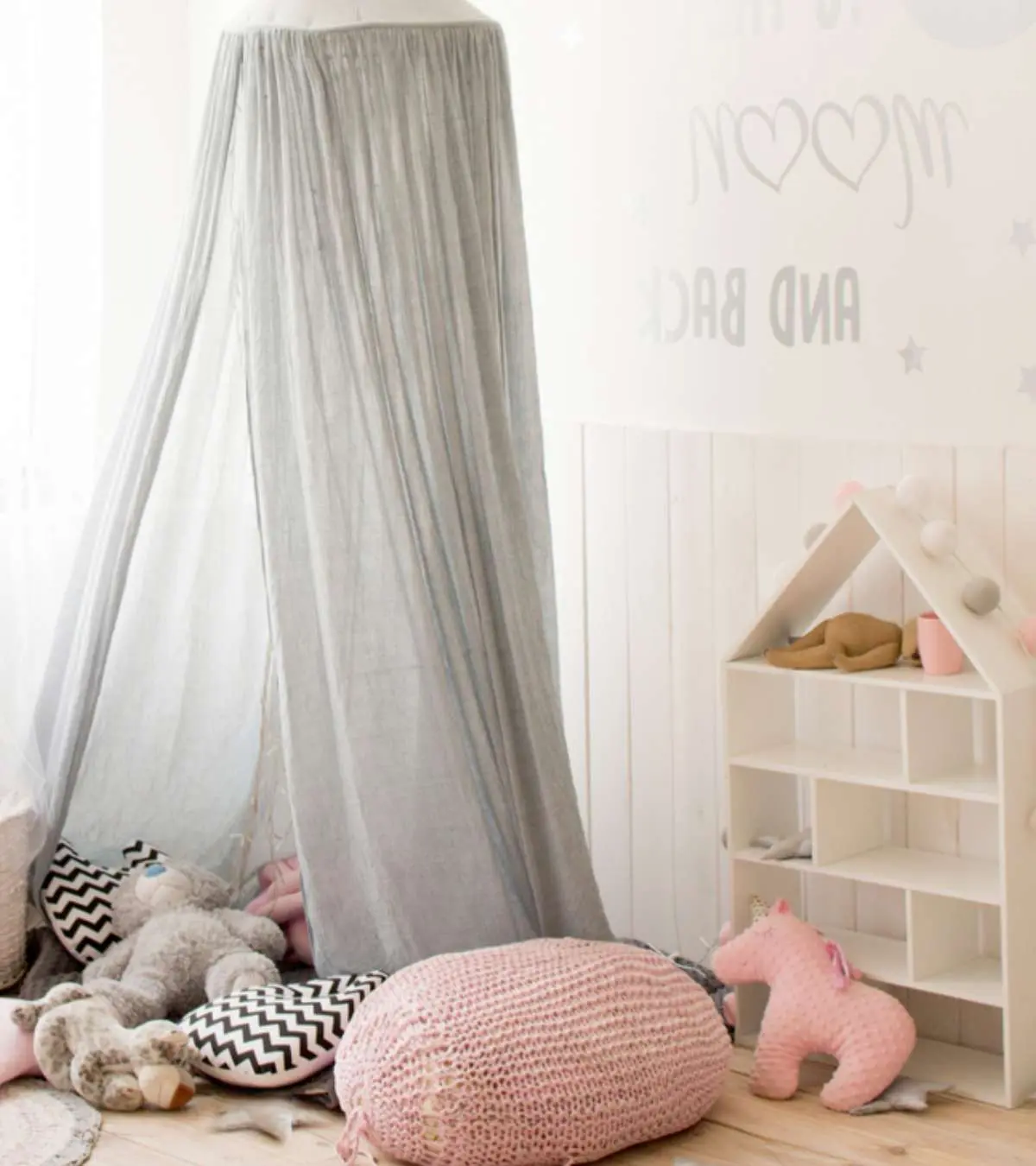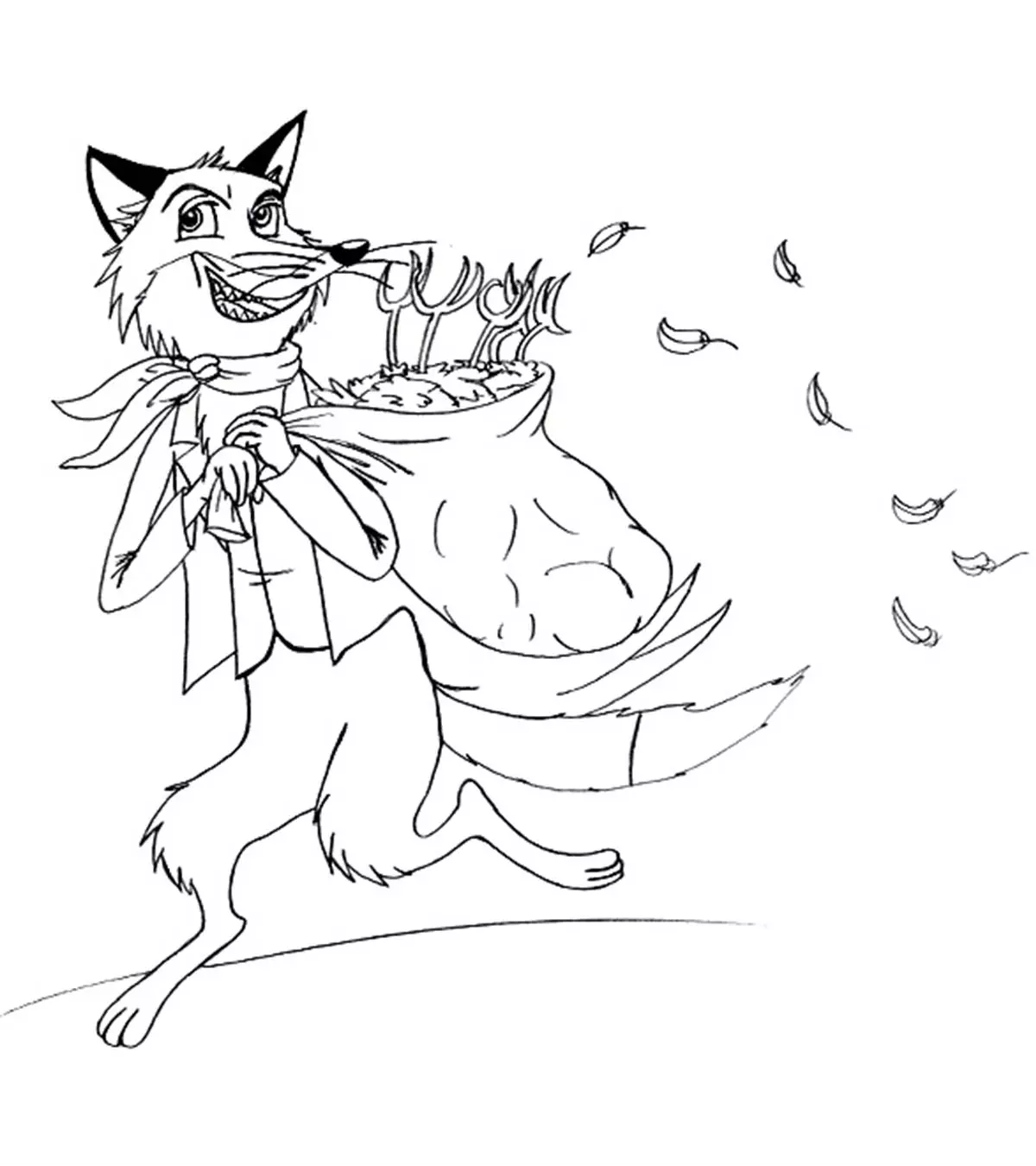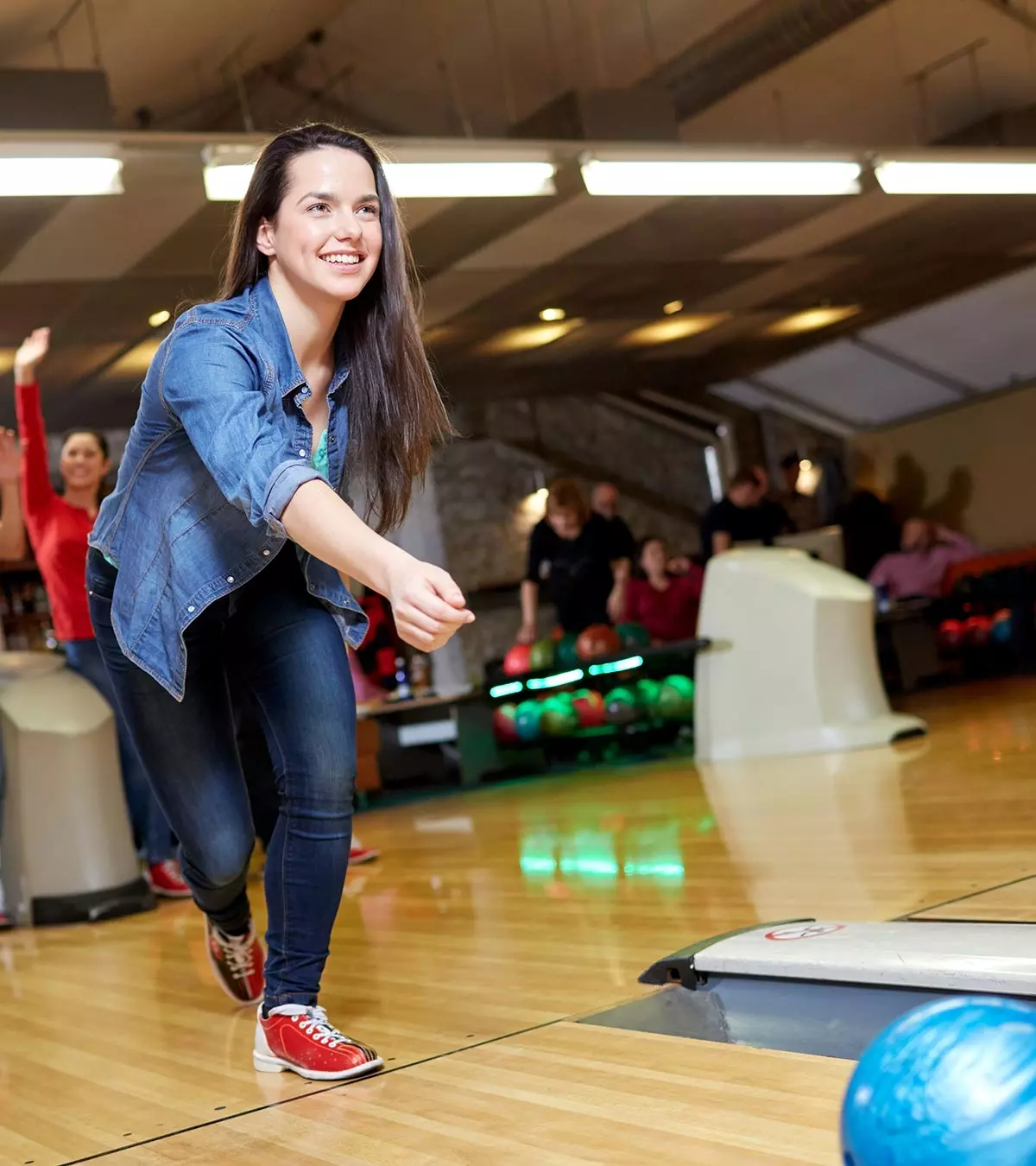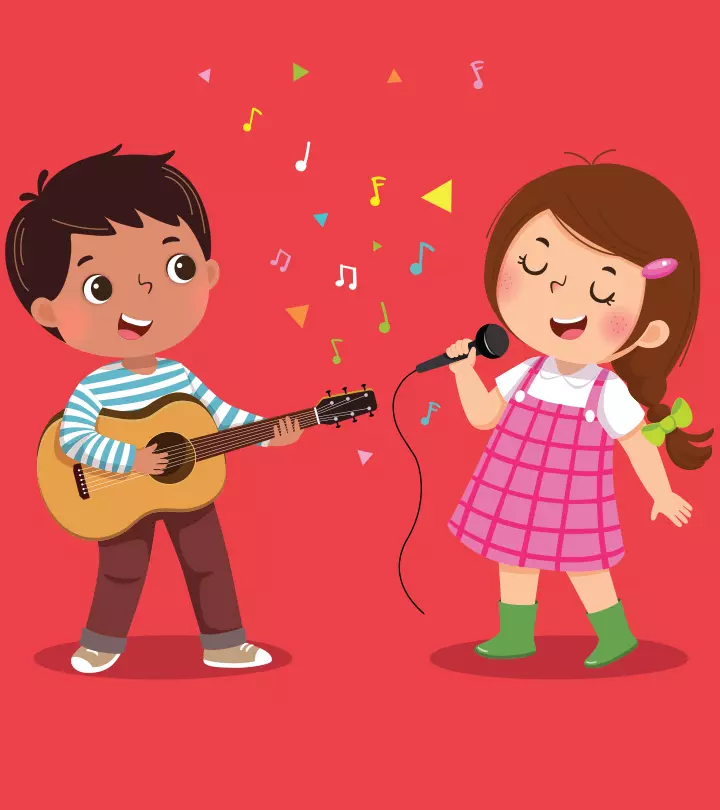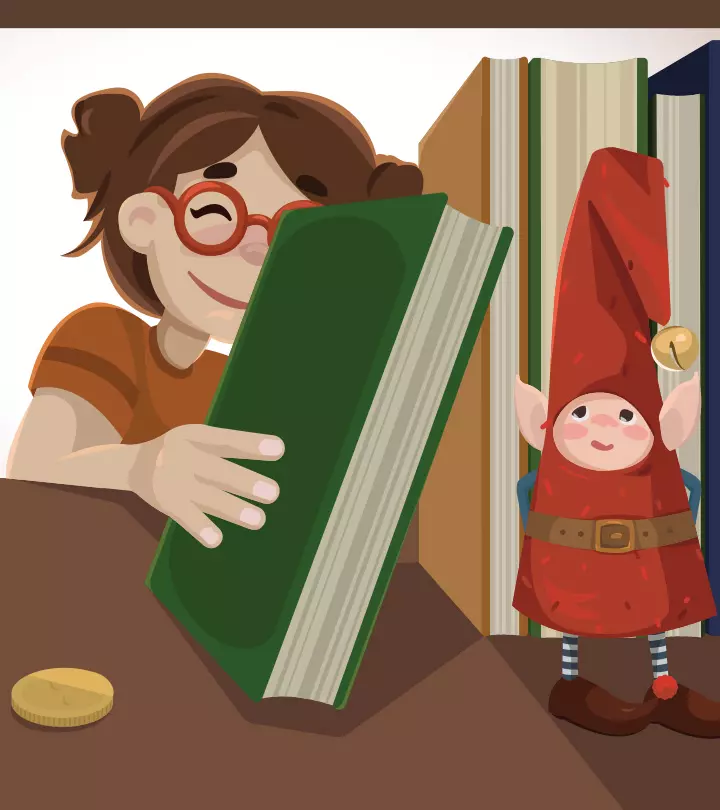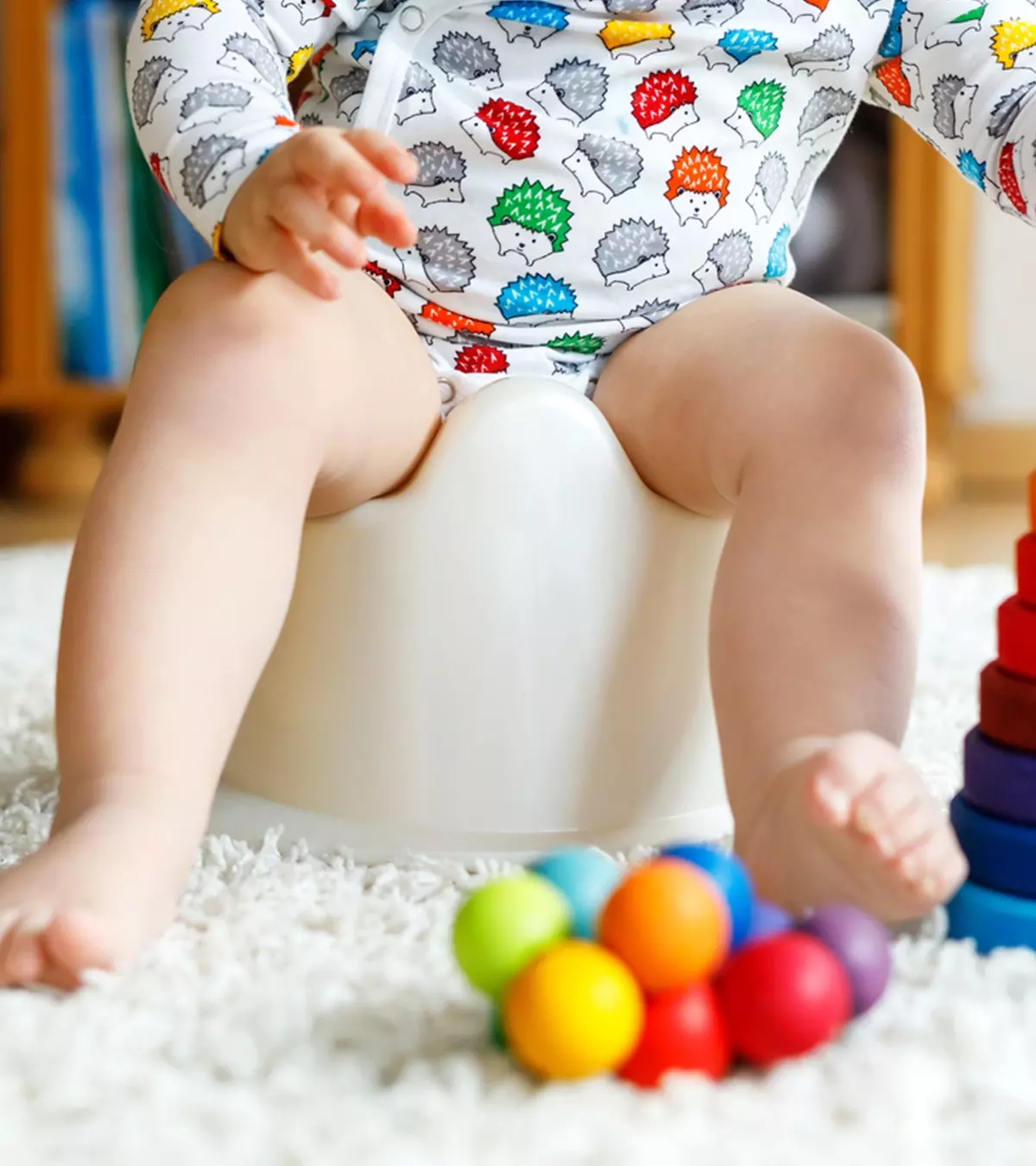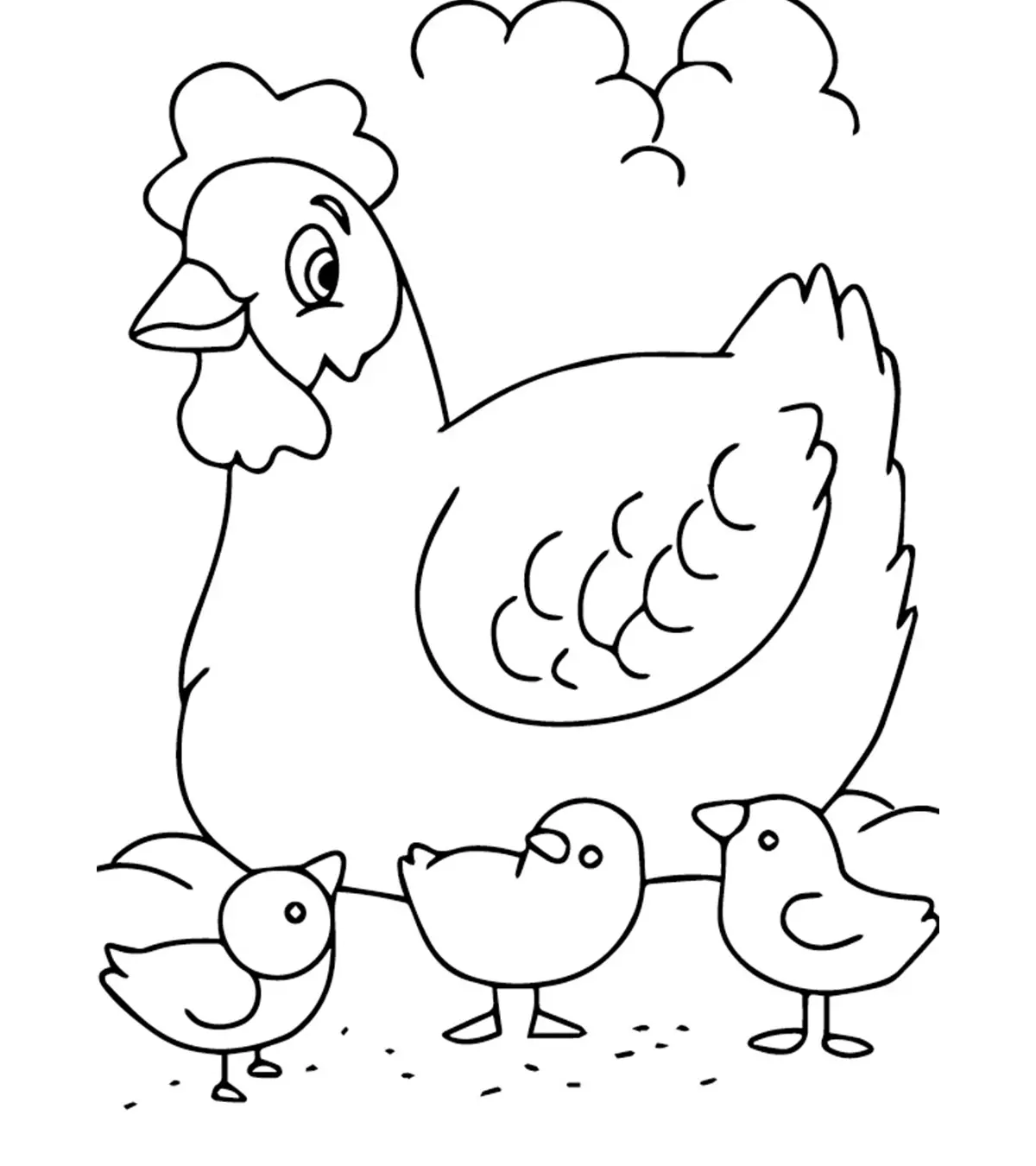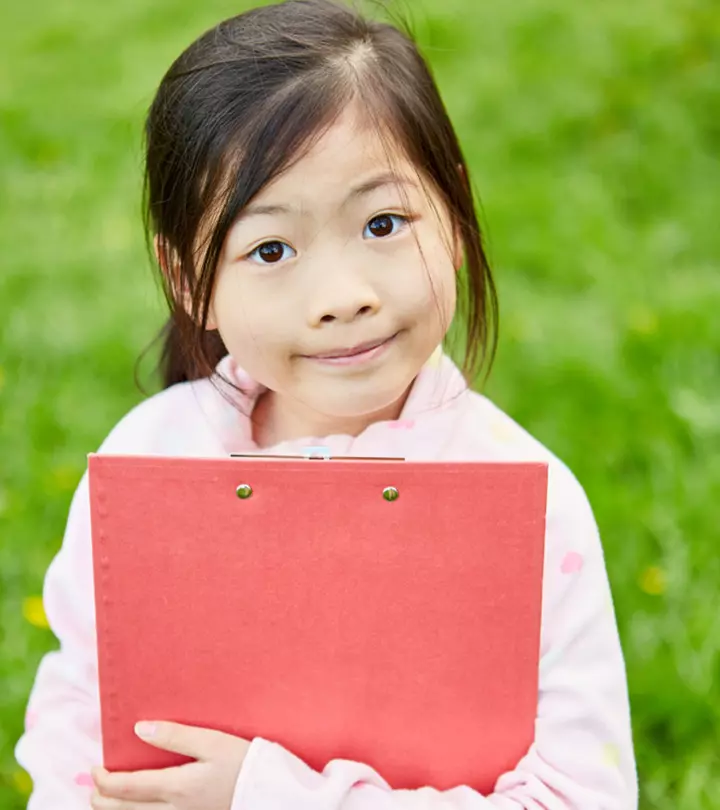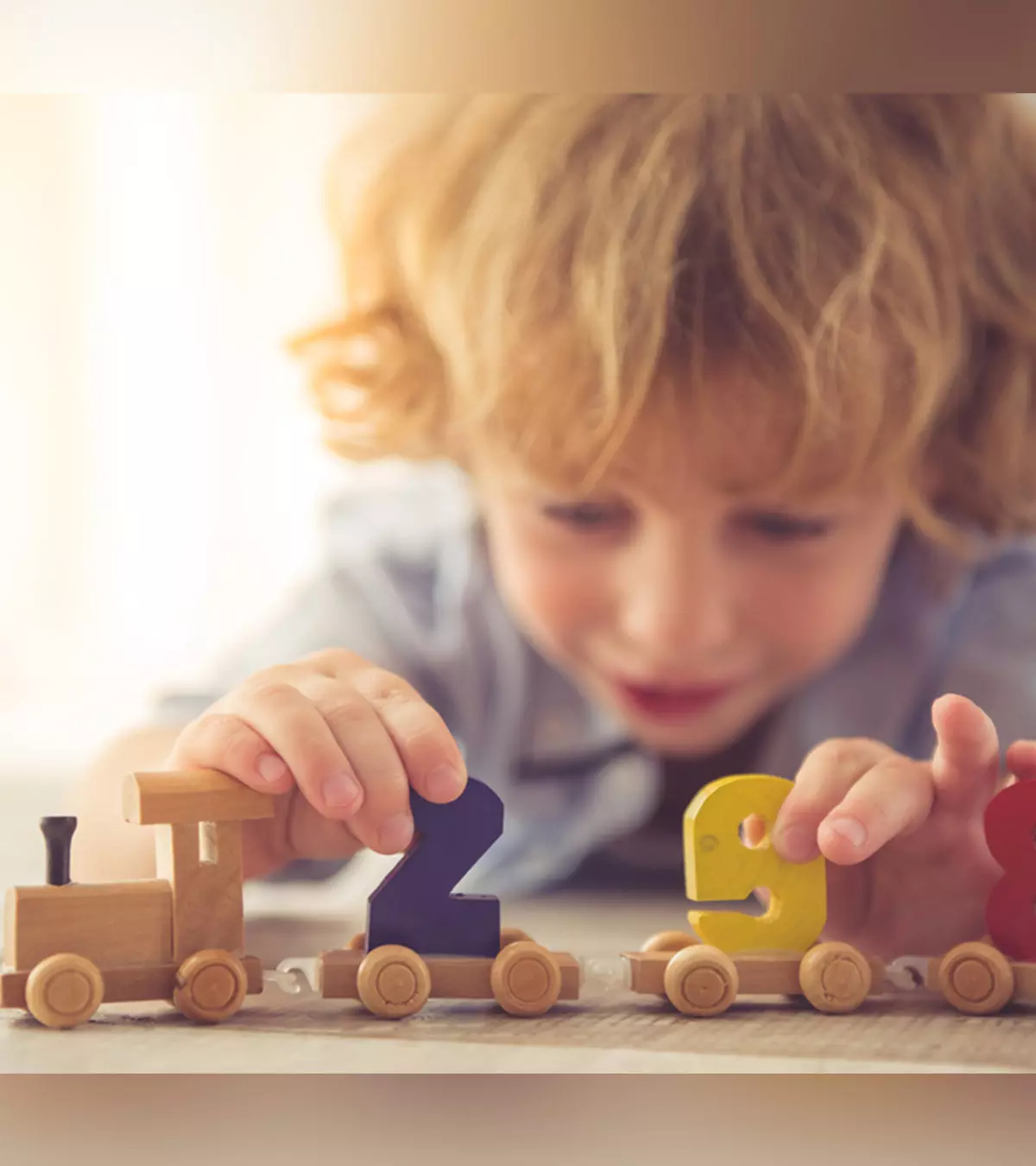
Image: ShutterStock
Parallel play activities for toddlers refer to a situation when a toddler plays alongside a group of children, but not necessarily with them. You must have noticed this with a few children, and also your child, and maybe wondering why your child is facing an issue mixing up with children their own age. However, this is no reason to panic. All this is a part of your child’s developmental process termed parallel play. Delve into this post for information on the benefits, importance, and types of activities in parallel play for your child. (1)

Key Pointers
- During parallel play, children imitate each other with the least interaction.
- Through this mimicking and observation, they learn social skills, new emotions, and social boundaries.
- Placing a toy in the center of the room or requesting your child to share their toys encourages parallel play.
- Sharing is also the path towards the next play stage, interactive play.
What Is Parallel Play?

It is what the name suggests. In this type of play, a child is seen playing around other children but not with them. This type of play marks a child’s initial steps toward social interaction. It is commonly seen in toddlers and involves their engagement in similar or different activities around kids of their age. As a parent, it is natural for you to feel worried when you see your child in a group but playing by themselves. Mother of two girls and blogger Vi-Zanne from Philadelphia shares her anxiety of seeing her daughter playing alone in her daycare. She says, “As parents, we all know that play is an important part of our child’s development. That is why I panicked when my eldest just watched other kids play when she was first enrolled in daycare. She wouldn’t join in. Occasionally, I would show up a little earlier than pickup time, and peek from the corner of the room to see how she’s doing. She would play, but she was always in her own world. She didn’t seem to pay attention to other kids around her, and didn’t make much effort to interact with her peers either. As a concerned parent, I started to google and stumbled upon the concept of parallel play. It was then I realized that this is just a natural and important stage of my daughter’s development. Phew! At least there was an explanation for her odd behavior (i)!”
Parallel play is the fourth stage in sociologist Mildred Parten’s six stages of play (2). It begins during the age of two years and follows the solitary and the onlooker play stages. Even though there’s no interaction between two children during parallel play, you would be surprised to know how well they grasp new words, emotions, and reactions through the simple act of observation. They also benefit from the presence alone of another child or adult playing next to them even without straightforward engagement.
The age during which parallel play is seen also marks the beginning of a child’s acquaintance with new people. At this point, the child is yet to figure out the world outside of their homes. They are overwhelmed by the concept of peers. Mimicking other children’s actions while still being a part of their comfortable, solitary play zone is their way of trying to make friends and get to know others.
What Does Parallel Play Look Like?
Two children playing in proximity with minimal interaction among them is what a parallel play looks like. It is characterized by the egocentric behavior of a child and a disinterest to coordinate with the activities of their playmate.
During parallel play, toddlers may or may not share the same toy, but there is a constant impersonation of each other throughout the play. This improves a child’s observational and social learning skills. For instance, when one child plays with dough, you may see the other one doing the same. Imitation is an advanced sign of parallel play that implies progression towards the next stage of a child’s development, namely the interactive play stage. You will see this as well within performances from toddlers. For example, a christmas concert of toddlers singing or dancing on Jingle Bells, a toddler may look at their neighbor to mimic what they are doing with their hands.
Importance Of Parallel Play
Although it may seem like there isn’t much happening during parallel play, it is a bridge towards more complex interactions in a child’s life (3). Around the age of two, as the child is still being introduced to people outside the family, they are usually overcome by fear and mistrust. Parallel play helps them take their initial step towards socialization. By being close to another person and participating in similar activities, they begin to dissolve their walls of doubt towards society.
Furthermore, parallel play also enables your child to learn new skills. During the course of mimicking others, you may observe your child has picked up on their vocabulary or have even updated their reasoning skills. This stage bridges the gap between solitary play and interactive play.
 Point to consider
Point to considerHow Parallel Play Benefits Toddlers?

Parallel play benefits toddlers in multiple ways. Besides helping your child learn social skills, here are a few more benefits of parallel play:
- Speech development
In a social setting, your child will overhear a few children or adults talking. When they hear someone call out a particular thing, they may relate that object with that word. During this course of observation, your toddler may pick up a few new words.
- Gross and fine motor skills development
When a child plays in a solitary environment, there’s not much to explore. But during parallel play, children start to imitate people around them and explore their surroundings.
Also, if there are a few motor skills that the other person displays, your child may try to imitate and enact them. For instance, if your toddler sees someone throwing a ball, they will try to learn the mechanism behind the action all by themselves.
- Expressing their desires and feelings
Apart from grasping social skills and game skills, your child will also capture the expressions following a given situation. Whether it is a moment of joy after a triumphant act or impounding grief after a fall, your child will learn them all. They may surprise you by expressing a range of emotions during this stage.
Thus, introducing your child to parallel play is a great way to peek into their little minds and observe the broad spectrum of emotions that they display when they step out into the world.
- Learning about social boundaries
Although a child may have their own set of actions at home, a few of these might not be suitable when outside. During parallel play, your child tries to understand this concept and develops a sense that the external world has a different set of rules. This can enable them to set up a few personal boundaries and also respect other people’s space.
- Learning to share

When introducing a parallel play activity to your child, you will notice that the common area has a variety of attractive toys that most children can’t keep their hands away from. You may often see your child wanting to play with a toy seen in another person’s hand.
Initially, they may be possessive of their toys and might be quite assertive. Here’s where you can interfere and teach them that the toys in the common area are meant for everyone.
Activities And Tips For Parallel Play
Parents play an important role in helping children progress during the parallel play stage. Here are a few tips you can consider to help your child (4) (5) (6):
- Try to create a social setting. Start with one or two kids as more can be overwhelming for your toddler.
- Start with smaller sessions as they may get restless sooner.
- Place toys in the center of the room, and let them understand that those toys are for everyone. Ensure there are enough toys for each child in the room.
- Building blocks, duplo blocks, stuffed animals, play dough, bricks, drawing or coloring books are suitable toys for a parallel play session.
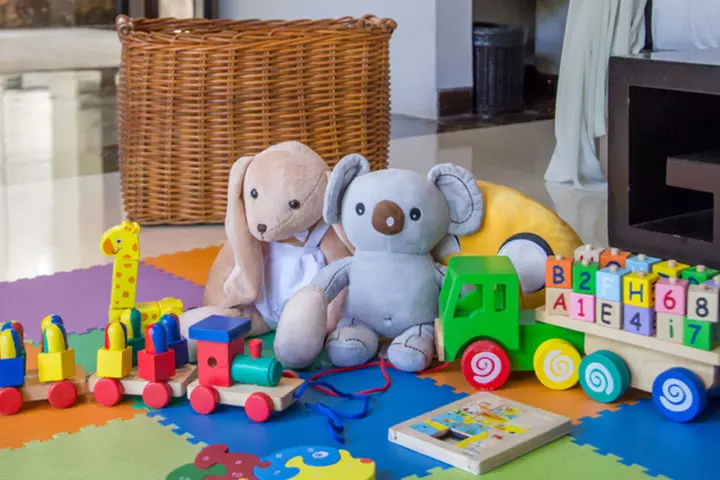
- If your child is not new to parallel play, encourage them to interact and even share their toy. Eventually, you may introduce new cooperation techniques between them.
- Understand that each child works at their own pace.
- Try changing the location of their play area and the timing of their play sessions after a few days. This will expose them to newer situations.
- Do not force activities on them. Let their creativity take the lead.
- You can plan activities such as drawing, hopscotch, dress-up, storytelling, sand play, water play, and outdoor play to promote parallel play among kids.
- Appreciate their attempts to be around new people.
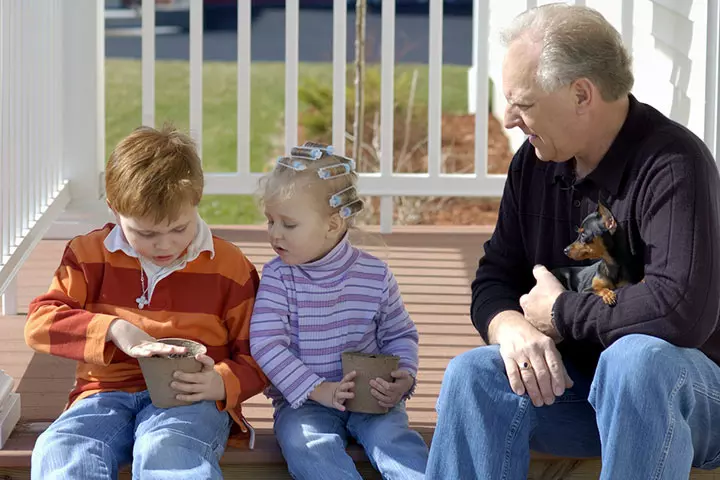
- After you’ve played your role, just sit back and observe your child’s actions at a distance.
 Quick tip
Quick tipEncouraging The Next Step: The Interactive Play
After this stage of play has been dealt with successfully by your child, you might see them progress towards the interactive play stage with little or no help from your side. This stage usually begins at the age of three, with the act of sharing being an early sign of development.
You can encourage this stage by creating a playtime routine or by monitoring their play structure. Encourage children to take turns during a game. Pretend plays and other forms of open plays can provide children with a great medium for interaction (4).
Frequently Asked Questions
1. What is the difference between parallel play and cooperative play?
Parallel play is the stage in which children do not engage in any social exchanges while playing. For example, dress-up, playing with cars, dolls, animals, playing with clay, water guns, hoola hoops, and playing with musical instruments. However, in cooperative play, the games require interaction between the children to achieve the game’s goal. Examples of cooperative play include puzzles, tag, hide and seek, tic-tac-toe, board games, ball games, and playing catch (7).
2. When does parallel play stop?
The period of parallel play usually lasts between the ages of two to three years. Parents should remember not to force children to interact with their peers during this stage, as it will happen on its own, eventually (8).
3. What are the risks of parallel play?
There is no major risk involved in parallel play except that if a child is habituated to parallel play and is unable to progress to co-operative or interactive play, they might feel isolated or may find it difficult to connect with other children. Parallel play does not directly promote interaction between children so it does not help them develop their vocabulary skills or teach them conflict resolution.
Parallel play is normal among toddlers and prepares them for social interaction. The parallel play may appear to teach nothing, yet in this time, a child learns a lot through observation. It is also the bridging phase between solitary and interactive play. Therefore, to help your child successfully head towards social interactions, encourage them towards parallel play. The above parallel play activities for toddlers will help you do so. Set the stage for the play based on the comfort level of your toddler. You may start promoting social interaction between the toddlers as they grow comfortable in each other’s presence.
Infographic: What Are The Advantages Of Parallel Play In Children?
Parallel play is a social development stage that requires children to play independently while being with other children. Read through the infographic below to learn the various ways in which parallel play helps children.
Some thing wrong with infographic shortcode. please verify shortcode syntaxIllustration: What Is Parallel Play? Benefits & Activities To Encourage It

Image: Stable Diffusion/MomJunction Design Team
Parallel play helps in a child’s physical and mental growth. Learn about the benefits of parallel play for young children. Discover how it helps them develop social skills and encourages creative thinking.
Personal Experience: Source
MomJunction articles include first-hand experiences to provide you with better insights through real-life narratives. Here are the sources of personal accounts referenced in this article.
i. How to encourage parallel play in toddlers;https://aroundtheclockmom.com/how-to-encourage-parallel-play-in-toddlers/
References
1. Parallel play; Pedal Hub: Resource Library
2. How kids learn to play: 6 stages of play development; Pathways
3. R.Bakeman and J.R.Brownlee; The Strategic Use of Parallel Play: A Sequential Analysis; JSTOR (1980).
4. Encouraging different stages of play; Dalai Lama Center for Peace and Education
5. The role of parents in children’s active play; Australian Government – Department of Health and Ageing
6. 24–36 Months: Social-Emotional Development; ZERO TO THREE
7. The Power of Play – Part 1: Stages of Play; Michigan State University
8. Stages of play; Our Health Service
Community Experiences
Join the conversation and become a part of our nurturing community! Share your stories, experiences, and insights to connect with fellow parents.
Read full bio of Alicia Spomer
Read full bio of Rohit Garoo
Read full bio of Dr. Ritika Shah
Read full bio of Apoorva K






